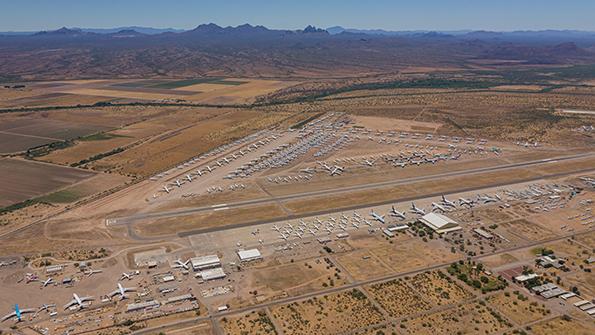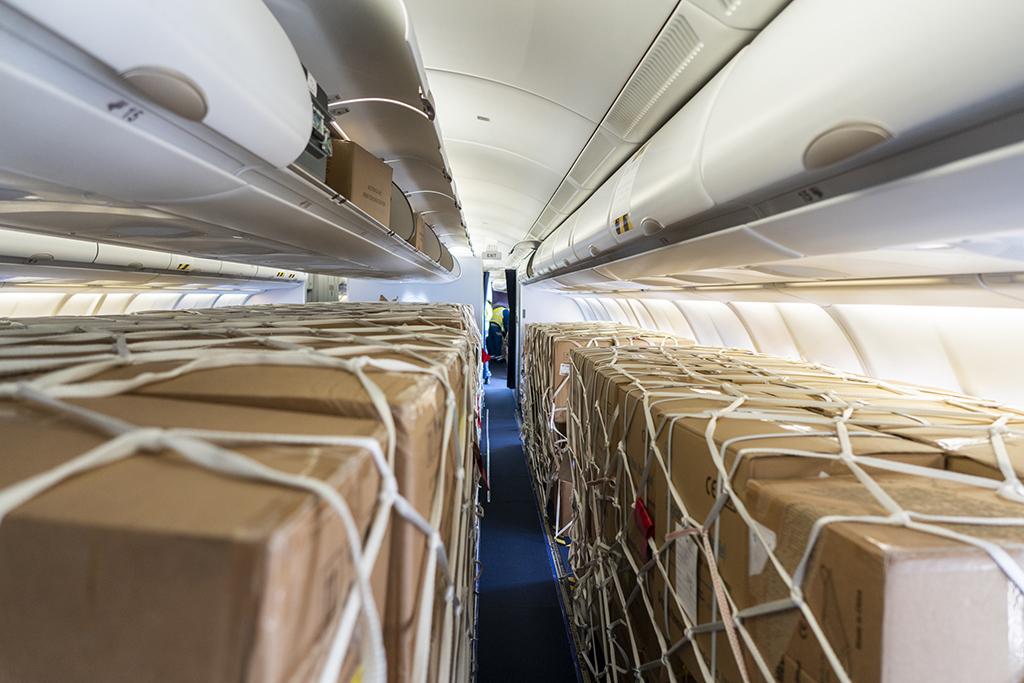MRO回復に向けた、予想される道のり| MRO’s Likely Road To Recovery

航空アフターマーケットの反発が始まったが、それはスムーズで着実な成長とはいえない。その不安定な道のりの中で、痛みを伴う乱高下が起きることは確実だ。当初の共通認識では、コロナ危機の影響を最初に受けた、アジア太平洋地域のマーケットから回復が始まっていくとみられていたが、今やそれすらも不確実だ。
6月24日、広州航空機整備工程有限公司(GAMECO)は9,000万ドルを投じ、2022年に操業開始予定の新たな部品・複合素材修理センターの建設に着手し、すでに高い能力を持つ分野のさらなる拡張を目指している。対照的に、カンタス航空は従業員の20%を削減し、2021年7月までほとんどの国際線を再開する予定はないことを発表した。
はっきりしていることは、これから迎えるいくつかの節目が、今後の道筋に大きく影響するということだ。9月には、航空会社によるレイオフを制限する代わりに支援を行う、アメリカのCARES(Coronavirus Aid, Relief, and Economic Security)法が期限を迎えることから、多くの航空会社は需要に基づいて運航スケジュールを調整し、それに合わせて労働力も調整するだろう。そして、回復には出張者も不可欠だ。これには会社による出張許可と、連続移動を可能にする頻繁な運航も必要だが、現在の海外渡航規制を考えると、それがいつ実現するかは分からない。また、北半球でバケーションに向けて旅行需要が急増すると航空会社が期待している2021年の夏シーズンはどのような形になっているのだろうか?もちろん、旅行の安心感に直結する、新型コロナウィルスに対する有効なワクチンが完成する時期にも大きな疑問符が付いている。
良いニュースは、アフターマーケットにおけるサプライヤーが低価格コンポーネント関連作業などについて回復の兆しを感じており、どうやら景気が底を打ったといえることだ。VAS Aero Services社のCEO・Tommy Hughes氏は「5月は最も厳しい月の1つだった。着手済の作業が終了していく中、エンジンやコンポーネント関連の修理は一切入ってこなかった。しかし5月末には、エンジンを中心に受注が入るようになった」と語る。
とはいえ、全体的なMRO業界の回復が急速に進むと考えてはならない。香港航空機技術有限公司(HAECO)社のCEO・Frank Walschot氏は「好調に回復しながら、2~3年かけて完全に回復するだろう」と予想している。
言葉を換えれば、「最悪を想定し、最高を期待しよう」ということだ。
フリートの現状:現在の立ち位置
世界各国の航空会社は歴史的な需要の落ち込みに対応して減便を進めたが、国内線や短距離路線を中心に、着実に運航を再開させている。航空会社は新たな(そして少ない)需要予測に合わせた調整を進めている。この動きに加えて、資金難に陥り運航再開ができなくなった航空会社もあることから、数千機の機材は再び運航されることはないだろう。旧型機の退役も加速していることから、フリートの若返りをもたらすことになる。
5月28日から6月12日にかけて、Aviation WeekのFleet Discoveryデータでは2,085機が運用中ステータスに復帰し、656機が駐機ステータス(週1~2日運航)から外れた。一方、この期間中に51機が退役し、保管ステータスに入った機数は444機増加したことから、航空会社は引き続き自社のフリートの選別を進めていることが分かる。6月12日現在では、フリート総数の44%が運用中で、その大部分をナローボディ機が占めている。Fleet Discoveryのデータによると、駐機中のフリートのうち63%がリース中の機材だ。
旅客機の過剰供給は価格にも影響を及ぼしている。平均すると、ナローボディ機の価格は10~20%下落し、ワイドボディ機は15~30%下落したと語るのは、Avitas社の上級副社長・Adam Pilarski氏だ。なお、同氏は機齢・機種・エンジンなどにより大きく変わってくることを強調しており、貨物機の価格は安定しているとも述べた。
シンガポールにあるリース会社Dragon Aviation Capital社の航空機技術資産管理チームリーダーを務めるJefferson Ding氏は、航空会社があらゆる手段を用いて手元資金の確保に奔走したことから、リースバックの契約金額がコロナ危機以前と比較して30~40%下落したケースすら聞いたことがあると話す。「長期的には、一部のジャンルの機材は他よりも早く通常の価格に戻るだろう」「たとえば、エアバスA321は貨物機への改装を含め、様々なマーケットに適応可能なことから、すぐにその価値を取り戻して安定した地位を保つだろう」と語った。
MROの回復
エンジンやコンポーネントのMRO事業者と比較して、「一般的に、過去の景気悪化の際には機体のMRO事業者が受ける影響は少なかった」「しかし、当然ながら今はまったく新しい領域にいる」と語るのは、MRO Holdings社のCEO・Greg Colgan氏だ。わずか1ヶ月前の予測に対して「我々の2020年における契約業務は3月末までに急減し、年末にかけて80%減になった」とも彼は話した。
Aeroman,・Flightstar・TechOps MX・North Stateを所有するMRO Holdings社は「第3四半期に向けてある程度回復し、安定している。しかし、2021年夏のスケジュールについて複数のシナリオを想定するために、顧客との調整を頻繁に行っている」「なぜなら、機体のMROは6ヶ月・12ヶ月の作業スケジュールを慎重に組み立てる必要があり、顧客が2021年夏シーズンに向けてフリートを準備するためには、こちらの2020年第3/第4四半期の作業量に大きなインパクトをもたらす可能性があるからだ」とColgan氏は述べた。
ヨルダンのMRO事業者であるJoramco社のCCO(最高商務責任者)・Fraser Currie氏は、リース終了時の点検と駐機サービスに対する強い需要があるとみており、この傾向はさらに12ヶ月は続くと考えている。彼は「年間売上に大きな変化はないと思うが、点検依頼が入る時期に変化が見られる」と話す。これは、多くの航空会社が「延長されたMPD(整備計画書:Maintenance Planning Document )作業を活用していることで時期に若干のシフトが起きており、夏の作業が冬にずれ込んだり、その逆も起きている」とも語った。
整備作業の時期がずれ込むことは、ボトルネックになるのだろうか?
Colgan氏は次のように述べている:「私が懸念しているのは、2021年における機体整備の受け入れ体制だ。予想されている大規模な機材の退役があったとしても、多くの航空会社が整備を後倒しすると、後になって殺到する可能性がある。その度合いは航空機の需要回復ペースに左右されることは明らかだが、程度の差はあるにせよ、後になって来ることは確実だと考えている。」
M&A:いま何が起きているのか?
過去5年間、民間機アフターマーケットでは着実にM&A活動が進められてきた。金融の世界からは、比較的安定して大きなリターンをもたらす業界として見られており、MRO事業者は投資家にとって常に魅力的な存在であり続けている。
その資金源のひとつがプライベート・エクイティ企業であり、MRO分野に資金を投入し続けてきた。過去18ヶ月間、Carlyle GroupによるStandardAero社、Greenbriar Equity GroupによるSTS Aviation社、Ardian社によるRevima社の買収など、プライベート・エクイティ企業による民間機アフターマーケットへの関心の高さは際立っている。
しかし、コロナ危機が金融マーケットに及ぼした打撃により、どのような案件でも進展には時間を要するだろう。
「短期的には、M&Aの大部分は保留されることになるだろう。M&Aには、買い手と売り手という積極的な2者が必要だからだ」「現在のアフターマーケット業界を担当する買い手の立場だとしたら、投資チームが取締役会や投資委員会に提出する案件を見つけ出すことは非常に難しい」と語るのは、Moelis & Co. のマネージングディレクター・Azad Badakhsh氏だ。
航空会社によるフリートの地上保管や、資金確保を最優先する会社によるメンテナンスの延期は多くのMRO事業者にとって負担となることから、これを引き金に統合を強いられる可能性も出てくる。「現在の市場環境で価値を最大化することは非常に困難なため、ほとんどの会社は売却には極めて消極的だ」と同氏は語るが、「選択の余地がないほどの苦境に立たされている売り手も出てくるだろう」と付け加えた。
生産量の低下に伴い、機体メーカーはアフターマーケットに注力していくことが予想されており、一部のアナリストはメーカーがMROとの提携を強化していく可能性もあると考えている。充分な資金力を持つ独立系企業は買収や投資を通じて市場シェアを拡大していくと思われ、中には現在の危機をチャンスと捉えている会社もある。これにより、小規模な独立系企業やオーナー企業は飲み込まれることもあるだろう。今後、マーケットがさらに新世代機を指向していく中で、旧型機の整備に特化した中小企業が買収の対象になる可能性が高い。
不確実性が残り、多くの企業がマーケット回復のより良い兆候を待っている中、一部の独立系企業はその渦中でもチャンスがあると考えている。Magnetic社のCEO・Risto Maeots氏は、同社は買収の可能性を検討していると語っている。「まずはこの危機から脱出する必要があるが、その後で成長していく方法も模索している」と彼は話した。

今後を見据えて
回復ペースについての意見は様々だが、その道のりは長く、多くの痛みを伴うという点については一致している。
Avitas社の上級副社長・Adam Pilarski氏は、旅客機の利用者数が2019年のレベルに戻るのは2023年末か2024年初頭と予想している。彼は、世界の経済活動は2021年に回復していくが、コロナ危機以前に予測されていた景気後退により、景気回復と利用者数には大きな溝が生まれると考えている。もしそうなれば、新造機の需要も落ちることになる。
他の業界アナリストの予測でも、2020年後半については暗い見通しを立てている。Teal GroupのRichard Aboulafia氏の予測では、航空機整備の売上は前年比で75%減となっており、コンサルティング会社・Alixpartners社の予測では60~65%減となっている。
エンジン分野においても、短期的には大幅な売上減が予想されており、コンサルティング会社 AeroDynamic Advisory社の予測ではエンジンのMRO需要は60%減少するとしている。
Lufthansa Technik Maintenance International社のCEO兼ヨーロッパ地域メンテナンス部門長・ Andreas Drosdowski氏は、将来像を描くための市場分析の重要性を指摘する一方で、ライン整備が最初に回復する分野になると考えている。「今後はさらに地上保管が増える見込みで、それが作業を生み出すことになる」と付け加えた。
オーストリアを拠点とするHeston MRO社のディレクター・Jonas Butautis氏は、コロナ危機後はより地域的なアプローチを採る可能性があると考えているが、それでも旅客機を中心としていくことは変わらない。彼は「顧客層はより近隣地域の会社にシフトするかもしれないが、それでも我々は地域内の航空会社と仕事をしていく。貨物機の需要が目に見えて増加しているとはいえ、世界には貨物機の約30倍の旅客機が存在することから、業界におけるMROのトレンドを変えることにはならない」と語った。
GE Aviation社でマーケティングサービスを担当するKeren Rambow氏は、マーケットの立ち位置をうまくまとめている。「回復への期待値が、アフターマーケットの供給力を決めるだろう」
以上は、Lindsay Bjerregaard, Lee Ann ShayとJames PozziがInside MROに書いた記事の簡略版です。 PMA部品、使用可能中古品(USM:Used Serviceable Material)、エンジンやテクノロジーの進化に関する、コロナ危機後の見通しについてはフルバージョンの記事をご確認ください。
The aviation aftermarket is starting to rebound, but it will be anything but a smooth, steady climb upward. The uneven path is sure to include some jagged spikes that will hurt. While conventional wisdom predicted that the Asia-Pacific market would recover first because it was the first affected by the COVID-19 pandemic, now even that does not seem clear.
On June 24, Guangzhou Aircraft Maintenance Engineering Co. (Gameco) broke ground on new $90 million component and composite repair centers that are planned to open in 2022 to help it further expand its already extensive capabilities. In contrast, the following day Qantas announced that it is cutting 20% of its workforce and does not plan to resume most international flying before July 2021.
What is clear is that a few markers will heavily influence the path forward—a big one is coming in September, when many airlines will adjust their flight schedules based on customer demand and when payroll support funding provided through the Coronavirus Aid, Relief, and Economic Security (CARES) Act, which comes with restrictions on layoffs, is set to expire. The recovery also needs business travelers, who will require both corporate clearance and increased flight frequencies to resume road-warrior travel; when that will happen is unclear, given current restrictions on international travel. What will the travel season be like in the Northern Hemisphere in summer 2021, when airlines are hopeful that travel demand will surge for the vacation season? And of course, the big question mark is the timing of an effective novel corona-virus vaccine, which would restore confidence in travel.
The good news is that the industry appears to be at or near the bottom of the market, with aftermarket suppliers starting to see an uptick in lower cost components, for example. “May was one of the toughest months that we saw because repair activity that had already started was finishing, and there weren’t any new inductions involving engine or component repair,” says Tommy Hughes, CEO of VAS Aero Services. By the end of May, business was starting to pick up, “especially on the engine side,” he says.
However, do not expect overall MRO recovery to be rapid. Hong Kong Aircraft Engineering Co. (HAECO) expects the MRO business to “come back strong and fully recover in the next two to three years,” says CEO Frank Walschot.
In other words: Plan for the worst, but hope for the best.
THE FLEET: WHERE WE ARE
Global passenger airlines grounded their fleets in response to a historic drop in demand but are steadily resuming flight schedules, with domestic and short-haul flights returning faster. Airlines are adjusting to projected new (and lower) demand forecasts. These, coupled with airlines in financial difficulty that may not resume operations, means thousands of aircraft most likely won’t return to service—with planned retirements of older aircraft accelerating, resulting in a younger fleet.
Between May 28-June 12, Aviation Week Fleet Discovery data shows that 2,085 aircraft returned to in-service status and 656 moved out of semi-active parked reserve status, flying 1-2 days per week. Meanwhile, 51 aircraft were retired during this period and aircraft in storage climbed by 444, indicating that airlines are further defining their fleets. As of June 12, 44% of the fleet was in service, the vast majority of which are narrowbody aircraft. Of the parked fleet, 63% is leased, according to Fleet Discovery data.
The oversupply of passenger aircraft is affecting values. On average, narrowbody prices have declined 10-20%, and widebodies have dropped 15-30%, says Adam Pilarski, senior vice president at Avitas, who emphasizes that there can be big differences depending on variables such as aircraft age, type and engines. Freighter aircraft prices have remained stable, he says.
Jefferson Ding, team leader for aircraft technical asset management at lessor Dragon Aviation Capital in Singapore, says he has heard of sale-and-leaseback transactions at prices 30-40% lower than prepandemic rates, as airlines grabbed whatever cash they could. “In the longer term, different classes of assets will come back to normal levels faster than others,” he says. “For instance, the [Airbus] A321 will regain value and remain constant due to its suitability to a variety of markets, including the passenger-to-freighter market.”
MRO RECOVERY
“Typically, airframe MRO has been more insulated from the downturns we’ve seen in the past,” compared to engines and component MRO, “but of course we’re in new territory here,” says Greg Colgan, CEO of MRO Holdings. “We saw our 2020 contracted work drop by the end of March by almost 80% for the end of year” from its projections just a month before, he says.
MRO Holdings, which operates Aeroman, Flightstar, TechOps MX and North State, has “recovered and stabilized to some extent for the third quarter,” but it is interacting with customers frequently as they develop different scenarios for their summer 2021 schedules,” Colgan says. “Because airframe MRO requires careful planning with six- and 12-month schedules, it can have a big impact on third-quarter/fourth-quarter 2020 workloads for them to have fleets ready by summer 2021.”
Joramco, the Jordanian MRO, is seeing a strong demand for end-of-lease checks and parking service, which Chief Commercial Officer Fraser Currie thinks will last another 12 months. He does not “anticipate a significant change to annual volumes, but we do see a change in the seasonal profile of when checks come to us.” That’s because with many airlines “taking advantage of extended MPD (maintenance planning document) tasks there is a slight shift in the seasonality, with some summer work being pushed to winter and vice versa,” says Currie.
Could the shifting maintenance tasks lead to a bottleneck?
Colgan says: “My outlier concern right now is around airframe capacity in 2021 because airlines delaying maintenance now could create a surge later, even with the forecasted aircraft retirements. The size of the surge will clearly depend on the pace of recovery, but we believe there is some form of surge coming.”
MERGERS & ACQUISITIONS: WHAT'S UP?
Over the past five years, the commercial aftermarket has been characterized by a steady stream of M&A activity. Viewed by the financial world as a relatively stable industry able to generate strong returns, MRO providers have consistently remained attractive to investors.
One of the sources of this financing has been private equity companies, which have consistently poured money into the MRO segment. In the past 18 months, deals such as the Carlyle Group acquiring StandardAero, Greenbriar Equity Group buying into STS Aviation and Ardian’s acquisition of Revima have further highlighted private equity’s affinity for the commercial aftermarket.
However, given the impact of COVID-19 on financial markets, any deals will take time to develop.
“In the near-term, M&A largely gets put on hold . . . any M&A deal takes two to tango, with a willing buyer and a willing seller,” says Azad Badakhsh, managing director of Moelis & Co. “If you’re a buyer in the current aftermarket business, it’s very hard for an investment team to come up with a base case to take to their respective board or investment committee."
Airline fleet groundings and deferral of maintenance work by cash-conscious carriers will put pressure on many MRO providers, which could force some deals. “Most companies are very loath to sell in the current market environment because it’s very unlikely they’ll be able to come close to maximizing value,” Badakhsh says, but he adds that “there are going to be some distressed sellers who won’t have a choice.”
With reduced production rates, airframe OEMs are expected to retain an aftermarket focus, and some analysts believe they may look to form more alliances with MROs. Well-backed independents have also been tipped to grow market share through buyouts and investments, and some are viewing the current crisis as an opportunity. It is expected that smaller independents and family businesses may be swallowed up. This is most likely for those focused on repairs for maintenance-intensive legacy aircraft types operating in what will become an even more new-generation-focused market.
Despite the uncertainties remaining, and many companies waiting for better indications of what a market recovery will look like, some independent companies still see an opportunity. Risto Maeots, CEO of Magnetic MRO, says the company would look at possible acquisitions. “We have to come out of this crisis first, but we are also looking at ways to keep growing afterward,” he says.
LOOKING FORWARD
Opinions on the recovery’s pace vary, with agreement that the path will be long, with many painful steps along the way.
Adam Pilarski, senior vice president at Avitas, predicts that airline traffic will not return to 2019 levels until the end of 2023 or early 2024. He sees global economic activity picking up in 2021 but thinks there will be a deeper disconnect between economic recovery and airline traffic due a recession predicted before COVID-19 broke out. If that happens, demand for new aircraft will also drop.
Other industry analysts’ predictions also paint a gloomy picture for the rest of 2020. Teal Group’s Richard Aboulafia has forecast that aircraft services revenue could be up to 75% lower in 2020 compared to last year, while consultancy Alixpartners, estimates a drop between 60-65% for this year.
In the engine segment, the near term will see large revenue declines, with consultancy AeroDynamic Advisory predicting that engine MRO demand will fall 60%.
While pointing to the importance of market analysis to paint a picture of the future, Andreas Drosdowski, head of maintenance Europe and CEO of Lufthansa Technik Maintenance International, believes line maintenance will be the first segment to pick up. “We see even more storage programs coming up which will generate work,” he adds.
Jonas Butautis, director of Australia-based Heston MRO, believes the company may adopt a more regional approach after COVID-19, albeit one still centered on passenger travel. “Our customer pool may change to a more local or regional one, but we will still work with commercial airlines in the region. There are still some 30 times more passenger than cargo aircraft globally, so this visual increase in importance of cargo aviation will not generate a major shift in MRO trends for the industry players.”
Keren Rambow, a GE Aviation marketing services executive, summarizes the market position well: “The recovery demand will dictate the levels of aftermarket supply.”
This is an abbreviated version of an article by Lindsay Bjerregaard, Lee Ann Shay and James Pozzi that appeared in Inside MRO. Read the full article for an outlook on parts manufacturer approval (PMA) parts, used serviceable material (USM), engines and technology advances post COVID-19.